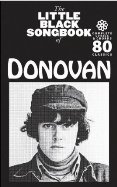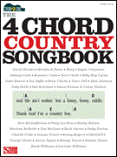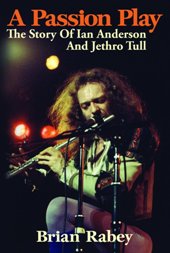
Irish band Horslips almost single-handedly invented Celtic Rock, a fusion of traditional songs and tunes with 1970's rock'n'roll.
 After finishing off with Justin Sandercoe's
free online Beginner's Guitar Course and learning songs from the Justinguitar.com Beginner's
Songbook [51],
you might turn your attention to his Vintage Songbook to progress beyond the beginner's level.
There are 50 classic songs from the 1950's to 1970's, kicking off with 15 beginner level songs
such as Simon And Garfunkel's "Cecilia" and Cat Stevens' "First Cut Is The Deepest".
15 intermediate songs such as the Stones' "Angie", The Band's "The Weight" and Bob Marley's "I Shot The Sheriff"
teach barre chords and 16th-note strumming patterns,
15 further songs such as Jackson Brown's "These Days" and James Taylor's "You Got A Friend"
introduce new, more complex riffs and licks, jazz chords, unusual time signatures, interesting chord grips, fingerstyle patterns etc. The volume is finishing off with 5 classic songs in full TAB transcriptions,
one song, "Johnny B Goode," and 4 instrumentals such as "Apache" (rather easy)
and Jeff Beck's "Cause We've Ended As Lovers" (rather difficult).
Every song is accompanied by performance tips, strumming patterns and fingering, often with tab and chord diagrams.
After finishing off with Justin Sandercoe's
free online Beginner's Guitar Course and learning songs from the Justinguitar.com Beginner's
Songbook [51],
you might turn your attention to his Vintage Songbook to progress beyond the beginner's level.
There are 50 classic songs from the 1950's to 1970's, kicking off with 15 beginner level songs
such as Simon And Garfunkel's "Cecilia" and Cat Stevens' "First Cut Is The Deepest".
15 intermediate songs such as the Stones' "Angie", The Band's "The Weight" and Bob Marley's "I Shot The Sheriff"
teach barre chords and 16th-note strumming patterns,
15 further songs such as Jackson Brown's "These Days" and James Taylor's "You Got A Friend"
introduce new, more complex riffs and licks, jazz chords, unusual time signatures, interesting chord grips, fingerstyle patterns etc. The volume is finishing off with 5 classic songs in full TAB transcriptions,
one song, "Johnny B Goode," and 4 instrumentals such as "Apache" (rather easy)
and Jeff Beck's "Cause We've Ended As Lovers" (rather difficult).
Every song is accompanied by performance tips, strumming patterns and fingering, often with tab and chord diagrams.
Justin Sandercoe, Justinguitar.com - Vintage Songbook: 50 classic songs for guitar with performancetips!
Wise Publications AM1005169,
2013, ISBN 978-1-78038- 686-7, pp208, £16.95 (www.justinguitar.com).
 Donovan's
[30]
"Catch the Wind" can be found among Sandercoe's beginner level songs.
79 more songs from the Scottish born singer-songwriter
are featured in The Little Black Songbook Of Donovan:
classic songs from 1965 to 2004, from "Atlantis" to "Your Broken Heart".
Early folksy numbers, later on experimenting with jazz, psychedelic and world music.
There are timeless hits such as "Universal Soldier" and "Colours" as well as
those less popular but which shouldn't be forgotten, I only recall Donovan's
adapted (and copyrighted) version of the Irish traditional "She Moved Through the Fair".
The songbook has lyrics and chords, keys are indicated as originally recorded.
Donovan's
[30]
"Catch the Wind" can be found among Sandercoe's beginner level songs.
79 more songs from the Scottish born singer-songwriter
are featured in The Little Black Songbook Of Donovan:
classic songs from 1965 to 2004, from "Atlantis" to "Your Broken Heart".
Early folksy numbers, later on experimenting with jazz, psychedelic and world music.
There are timeless hits such as "Universal Soldier" and "Colours" as well as
those less popular but which shouldn't be forgotten, I only recall Donovan's
adapted (and copyrighted) version of the Irish traditional "She Moved Through the Fair".
The songbook has lyrics and chords, keys are indicated as originally recorded.
The Little Black Songbook Of Donovan.
Wise Publications AM1006511,
2013, ISBN 978-1-78305-101-4, pp176, £10.95.
 The Strum & Sing series for Easy Guitar provides a sweet and short approach to
the 40 most popular country music songs – just chords and lyrics in easy-to-play arrangements,
to be precise only four chords are needed in each song. It sounds way too simple, but simplicity
spawned hits such as "Jambalaya", "Me And Bobby McGee" and "Ring Of Fire".
Just let's do some name-dropping of the featured artists:
Johnny [26]
and Rosanne Cash [41],
John Denver [51],
Kris Kristofferson [52],
Hank Williams and Dolly Parton,
Shania Twain and the Dixie Chicks, ...
The Strum & Sing series for Easy Guitar provides a sweet and short approach to
the 40 most popular country music songs – just chords and lyrics in easy-to-play arrangements,
to be precise only four chords are needed in each song. It sounds way too simple, but simplicity
spawned hits such as "Jambalaya", "Me And Bobby McGee" and "Ring Of Fire".
Just let's do some name-dropping of the featured artists:
Johnny [26]
and Rosanne Cash [41],
John Denver [51],
Kris Kristofferson [52],
Hank Williams and Dolly Parton,
Shania Twain and the Dixie Chicks, ...
The 4 Chord Country Songbook.
Hal Leonard HL 00114936,
2013, ISBN 978-1-4803-1258-6, pp102, US$ 12,99.
The water is wide, I cannot cross o'er, and neither have I wings to fly.
Build me a boat that will carry two, and both shall row, my love and I.
"The Water Is Wide" is an old English folk song, its lyrics dating back to the 17th century.
The lyrics were consolidated by Cecil Sharp [26] from multiple sources,
the song was popularised by the late Pete Seeger [53]
and has been popular ever since. Check out recordings by
Luka Bloom [29],
Anne Sands [22],
the Irish Trad Heads [30]
or the Dragseth Duo [44].
Eventually, the song has been arranged here for SATB plus piano for Yorkshire's Cadenza choir by
Tim Knight
[48]
[50]
[52].
Tim Knight, The Water is wide.
Spartan Press TKM714,
2013, ISMN 979-0-708106-92-0, pp7, £1.60.
Horslips came together while some of the boys were working at Arks advertising agency in Dublin. One day there was need for a band for a video commercial. Eamon Carr (drums) remembers:

Charles O'Connor (concertina, mandolin, fiddle) admits:
Carr once again:
Early band member Kieron 'Spud' Murphy puts some light on the band's name:
On St Patrick's Day 1972 Horslips released their debut single, "Johnny's Wedding" / "Flower Amang Them All," and tapped into a teenage glam market made up of kids who had no interest in traditional music. Their debut LP, "Happy To Meet, Sorry To Part," followed in December, bearing an elaborate, concertina-shaped sleeve designed by Charles O'Connor.
The next album was a mini rock musical, "The Táin" (1973), based on the legendary Irish story of the Táin Bó Cuailnge (The Cattle Raid of Cooley). "Dancehall Sweethearts" (1974) was documenting the life of the blind 17th century harper Turlough O'Carolan,[20] and the even more ambitious, sophisticated and ultimately more substantial "Book of Invasions" (1976) told the ancient Irish legend of the Tuatha Dé Danann in three symphonic movements, related to the three Celtic modes of geantraí, goltraí and suantraí, i.e. joyful music, sorowful music and lullabies, respectively.
Horslips became both famous and infamous, as Jim Lockhart (keyboards, whistles) recalls:
Horslips were looking for a big, fat stadium sound and were ditching the concertina and mandolin in favour of electric guitars and rock'n'roll: The band had split into two parties. Barry was still firmly waving his folky flag with his writing, while Charles was bringing new wave sensibilities into the mix.
Barry Devlin (bass) later realised that the song "Rescue Me" (actually about Vietnamese boat people) subconsciously was also about myself and the way I felt towards the band at the point. We were falling apart. The band's farewell party was at Belfast's Ulster Hall in 1980, at the end of "Sword of Light" Charles O'Connor broke his fiddle over one of the monitors and threw it into the crowd. Horslips made their reunion not until 2009, performing one and off concerts ever since.
Author Mark Cunningham, a devoted Horslips fan since his teens, is giving the reason why telling the Horslips story:
Or in the words of Jim Lockhart:
At one point Lockhart is quoted that he spend time in the library, reading the big coffee-table-sized books of old song collections ... Now here it is, the Horslips' own coffeetable book, featuring album art, concert posters, handwritten lyrics and set lists, and rare photographs from the band members' archives. An appendix includes all albums with track lists, singles and EPs, even post-Horslips projects.
40 years after "The Táin", Tall Tales is the first-ever Horslips biography. The story is told in in their own words (past and present band members), kicking off with childhood and influences before they met and spawning a 10 year career of concerts, tours and recording sessions.
Despite the book's title, there are no Tall Tales from the Celtic Twilight, but hard facts and details. Have you ever wanted to know which traditional Irish tune is incorporated into which Horslips song? For example, the first three horn notes of "Daybreak" correspond with the opening notes of the traditional song "Níl na lá", whereas the middle section with organ and tin whistle is taken from the lament "Anach Cuan". The riff from "Trouble (With A Capital T)" is borrowed from "Brian Boru's March", and "Sword of Light" has been written around the reel "Toss the Feathers".
My recommendation: put the book on your coffeetable, browse through it at every oppportunity,
and indulge in every page that stirs your attention!

Jethro Tull… the very name conjures up battle lines between music critics and music fans. I have always sided with the fans as they were an important band in my youth and a gateway band to digging into UK and European psychedelic folk music scene—first Tull, then Horslips, then Steeleye Span, etc. etc.
This book compares well to “Jethro Tull – A History of the Band” by Scott Allen Nollen, which was the one book I have read on Tull. That book was written from a detail-obsessed fan and had excellent information. Brian Rabey seems only slightly less detail obsessed, but takes the approach of trying to link together his extensive interviews with Ian Anderson and former band members into a coherent story. At times it reads like an oral history, but thankfully he tries to resolve discrepancies and create some logic to the narrative. It does not always work, but there is enough there to make this a highly interesting read.
There is nothing wrong with letting the interviewee leave holes in their story as it is fun to try to plug them, such as all the line up shifts here. One of the more fascinating facts that I somewhat knew, was how Ian Anderson replaced his band with old friends in the early years. What is amazing is that pre Tull bands The John Evan Group and The Blades had a line-up of Ian Anderson on guitar, Jeffery Hammond on bass, John Evan on keyboards (initially drums) and Barry Barlow on drums. Jethro Tull’s first album only had Anderson on it, yet by the time of “Thick as a Brick”, the pre-Tull lineup became Jethro Tull (along with the essential Martin Barre).
There is a sequential study of the albums, which offers interesting opinions. “Benefit” was Glenn Cornick’s favorite while Martin Barre always asked to play some songs from it. Ian Anderson thought it too dark and could not find a way to sing it appropriately so the songs were dropped quickly and pretty much forever. The book also gives proper credit to a latter album “Roots to Branches” calling it the grown up version of “Stand Up” (my personal favorite).
I have some theories on the critical hatchet jobs given to Jethro Tull over the years. Although the author thinks it is due to jealousy due to the band (along with other maligned progressive bands) being really good players, I think it goes well beyond that. Ian Anderson simply never fit in to that awful rock star stereotype of that era. Read any rock autobiography or biography and you will be saddened how much alike they all are. Kids with a vision find each other, form a band, get big, do drugs or alcohol, and then maybe a few different directions are taken. Either these children who never grew up pay no attention to the business while letting managers act like the mob (Led Zeppelin) or rip them off (Black Sabbath, the Who, etc.) or they don’t pay enough attention to it because they are artists.
Jethro Tull did not have a manager since the earliest days because Ian Anderson understood business and stayed away from the rock star vice clichés. I believe critics did not respect his artistry for that and I am sure they preferred laughing at Keith Moon and getting fancy artsy quotes from Pete Townshend instead. Their loss, the fans knew and know best when it concerns Jethro Tull. Just listen to the music and read this book for further understanding.
[David Hintz]
Brian Rabey, A Passion Play – The Story of Ian Anderson and Jethro Tull. Soundcheck Books, 2013, ISBN 978-0957144248, pp288, UK£14.99.

It’s not often that I review a book at FolkWorld. But this time an intriguing document found its way to the German editors. Abigail Wood, who teaches ethnomusicology at the Haifa university, studied the Yiddish songs in North-America in the past, let’s say, hundred years. Focusing on contemporary Yiddish music, makes her story a different one than publications about the traditional Yiddish music. It’s actually a modern ethnomusicology study that shows a new phase in Yiddish music.
It’s not an easy book to read. Wood focus on a more skilled audience who already has knowledge about the Yiddish musical heritage and understand basic academic writing. Step by step she reveals the secret of modern contemporary Yiddish music by smart analyses. I can easily follow the main lines (as a non-native English speaker and with my Academic background in social studies), but I do miss details because of my lack of knowledge on this specific matter.
Nevertheless I wish that more of these studies were made about modern variations of traditional styles. I think it´s it important that we see traditional music as something that lives, breathes and is constantly changing. And maybe by studying the way this music changes, we also understand the generation that sings and plays them in a better way.
[Eelco Schilder]
Abigail Wood, And We're All Brothers – Singing in Yiddish in Contemporary North America. Ashgate, 2013, ISBN 978-1-4094-4533-3, pp218, UK£55.00.
Photo Credits:
(1ff) Book Covers, (7) Horslips,
(8) Ian Anderson (Jethro Tull)
(from website/author/publishers).